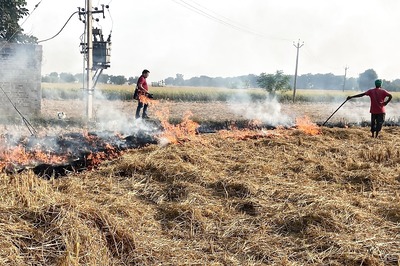
views
Stocks are battered down, food prices have shot up and loans have got pricey.
And if all this isn't enough for the common man to fret, there is the all important concern – if the money in his bank is safe or not!
Recently, we carried a story on how Indian banks are safe. However, most bank customers are still anxious about the safety of their banks.
Wealth addresses your grievances and offers a solution.
Grievance 1: I have no inkling about the bank's fate, until it has collapsed. And then, it may get too late.
Solution: Do some number crunching
Look at the banks' key ratios and parameters (such as net worth and profits). This will tell you about its financial health.
According to Himendra Hazari of Karvy Consultancy, you can look at the following ratios:
Capital Adequacy Ratio: Commercial banks need to maintain a minimum capital to risk-weighted assets ratio (CRAR) of 9 per cent. In simple terms this means that if the bank has given out Rs 100, it should have at least Rs 9 with it as capital.
Here's a brief snapshot of the CAR of some banks:
Source: A Profile of Banks - Reserve Bank of India
PAGE_BREAK
Non-performing Assets (NPA) Ratio: NPAs refer to the loans given by a bank that it classifies as doubtful. This means that the bank has low or no hopes of recovering money on these loans.
This gives a peek into how the bank uses its money for lending. Low NPAs mean that the bank has been prudent in giving out loans. "Some banks tend to keep their NPAs higher because they dont want to take the additional risk of bad lending during turbulent times," says author and investor, Yogesh Chabria, of Happionaire.com.
Source: A Profile of Banks - Reserve Bank of India
Statutory Liquidity Ratio (SLR): This is the minimum amount of reserves (held in cash, gold, short term securities and other liquid assets) a bank must maintain during all times, after all it's investments and lending.
The SLR for Indian banks is normally 25 per cent of the capital. For example, if a bank has Rs 100 with it, before it gives away all of it, it has to maintain at least Rs 25. This helps in case depositors want to withdraw money, or for liquidity purposes.
You can check these ratios in the bank's balance sheet. "Besides the ratios, also see the assets and liabilities of your bank, since it gives a snapshot of its financial position," adds Chabria.
PAGE_BREAK
Grievance 2: My deposits are insured only up to Rs 1 lakh.
Solution: Spread your deposits
Deposits up to Rs 1 lakh are insured under the government's Deposit Insurance and Credit Guarantee Corporation (DICGC).
As per this scheme, even if you keep multiple deposits (savings and fixed deposits) across branches of one bank, only a total of Rs 1 lakh is insured.
However, spreading your money across two-three banks helps. "This way you can get the maximum coverage on your deposits", Chabria.
There is another good news. The government is in talks with the RBI to raise the ceiling on deposit insurance from the present Rs 1 lakh to Rs 2 lakh.
Smart tips
Hazari has some tips for the safety of your money:
Stay away from banks that offer you a comparatively higher interest rate on FDs than other banks. This is known as 'adverse selection' in banking terms. “They would offer higher rates only because they need funds," he adds.
Beware of banks that have grown too fast, too quick.
Despite the rumors that have been doing the rounds, Chabria brings in assurance by saying," Depositors in India are extremely well protected. Even if a bank goes bust, the RBI should take care of it, and the investors may suffer, not the depositors."
Disclaimer: The contents of the article or are for information purpose only and are in no way meant to be advisory in nature. The author does not claim responsibility for actions taken by readers on the basis of the Article. Please consult your financial advisor for your personal money management.




















Comments
0 comment